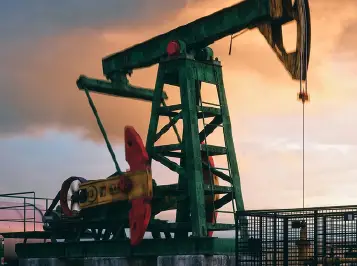In the oil and gas industries, hydraulic directional valves are crucial for controlling the flow of fluids in various operations. They are used in:
- Drilling Rigs: Control the movement of the drill string and manage the mud pumps for drilling operations.
- Blowout Preventers (BOP): Operate critical safety equipment to seal, control, and monitor wells to prevent blowouts.
- Subsea Systems: Manage the operation of remotely operated vehicles (ROVs) and other subsea equipment for deepwater exploration and production.
- Hydraulic Fracturing: Control the blending and injection of fracturing fluids into the wellbore to extract oil or gas.
- Wellhead Control: Regulate the flow of hydrocarbons from the well, ensuring safe and efficient extraction.
- Pipeline Control: Manage the flow and pressure in pipelines for transporting oil and gas.
- Turret Mooring Systems: Control the positioning of floating production storage and offloading units (FPSOs) in offshore production.
- Artificial Lift Systems: Regulate hydraulic pumps used in artificial lift techniques to enhance oil recovery.
- Processing Facilities: Manage the operation of separators, heat exchangers, and other processing equipment.
- Hydraulic Power Units (HPUs): Provide the necessary pressure and flow to operate various hydraulic equipment in the field.
These applications are critical for efficient, safe, and precise operations in exploring, extracting, and processing oil and gas.
Hydraulic directional valves in the oil and gas industry are vital for several reasons. They offer precise control over fluid flow, which is crucial in high-pressure environments. For instance:
- In drilling operations, these valves help control the rate of penetration and maintain the balance of pressure in the wellbore, preventing issues like kicks or blowouts.
- In subsea production systems, hydraulic valves operate under extreme conditions to control the flow from subsea wells, ensuring the safe transport
Yes, hydraulic directional valves are essential in oil refineries. They are used to control the flow of hydraulic fluid in various refinery processes and equipment, ensuring precise operation and safety. Here’s how they are applied:
- Control Systems for Equipment: They manage the movement of hydraulic actuators in valves and pumps that regulate the flow of crude oil and refined products during processes like distillation, cracking, and reforming.
- Conveyor and Transfer Systems: These valves control the hydraulic systems used in conveyors and pumps that move crude oil and products through the refinery.
- Safety Systems: In emergencies, hydraulic directional valves operate pressure relief systems or shut-off mechanisms to prevent equipment failure or leaks.
- Heat Exchanger Maintenance: They help control flow to and from heat exchangers, which are critical for temperature regulation in refining processes.
- Storage and Distribution: Hydraulic valves are also used in controlling the loading and unloading systems for storage tanks and pipelines, ensuring efficient product transfer.
By providing precise and reliable control, these valves contribute to the overall efficiency, safety, and productivity of refinery operations.

